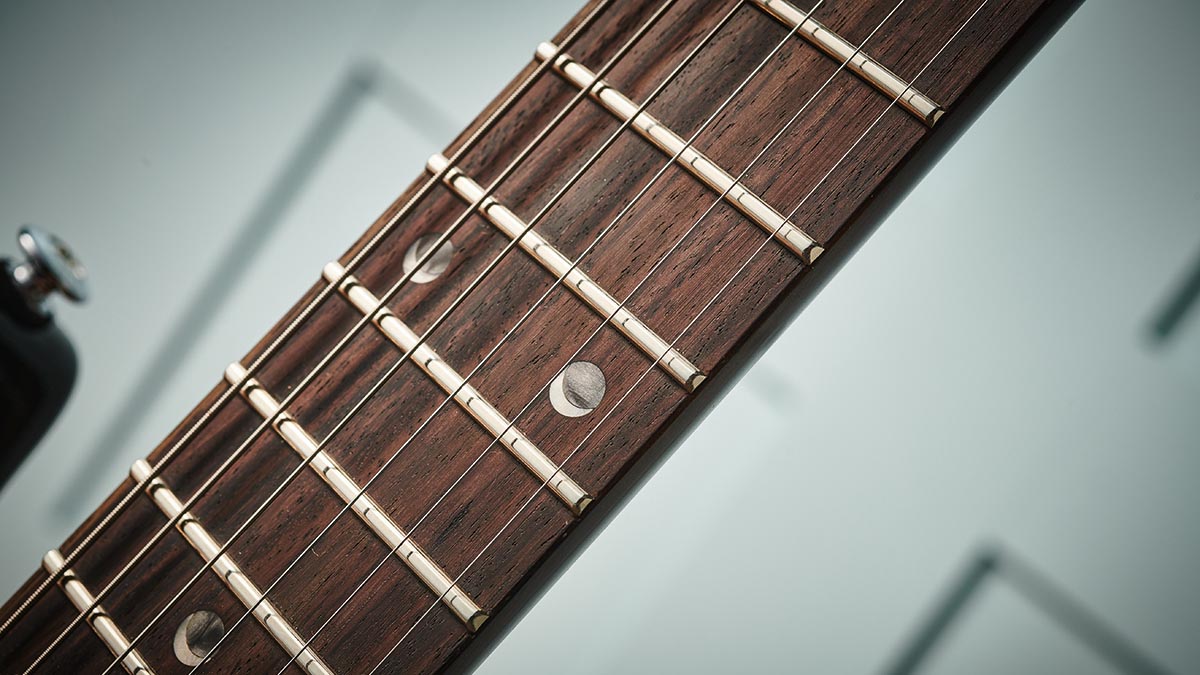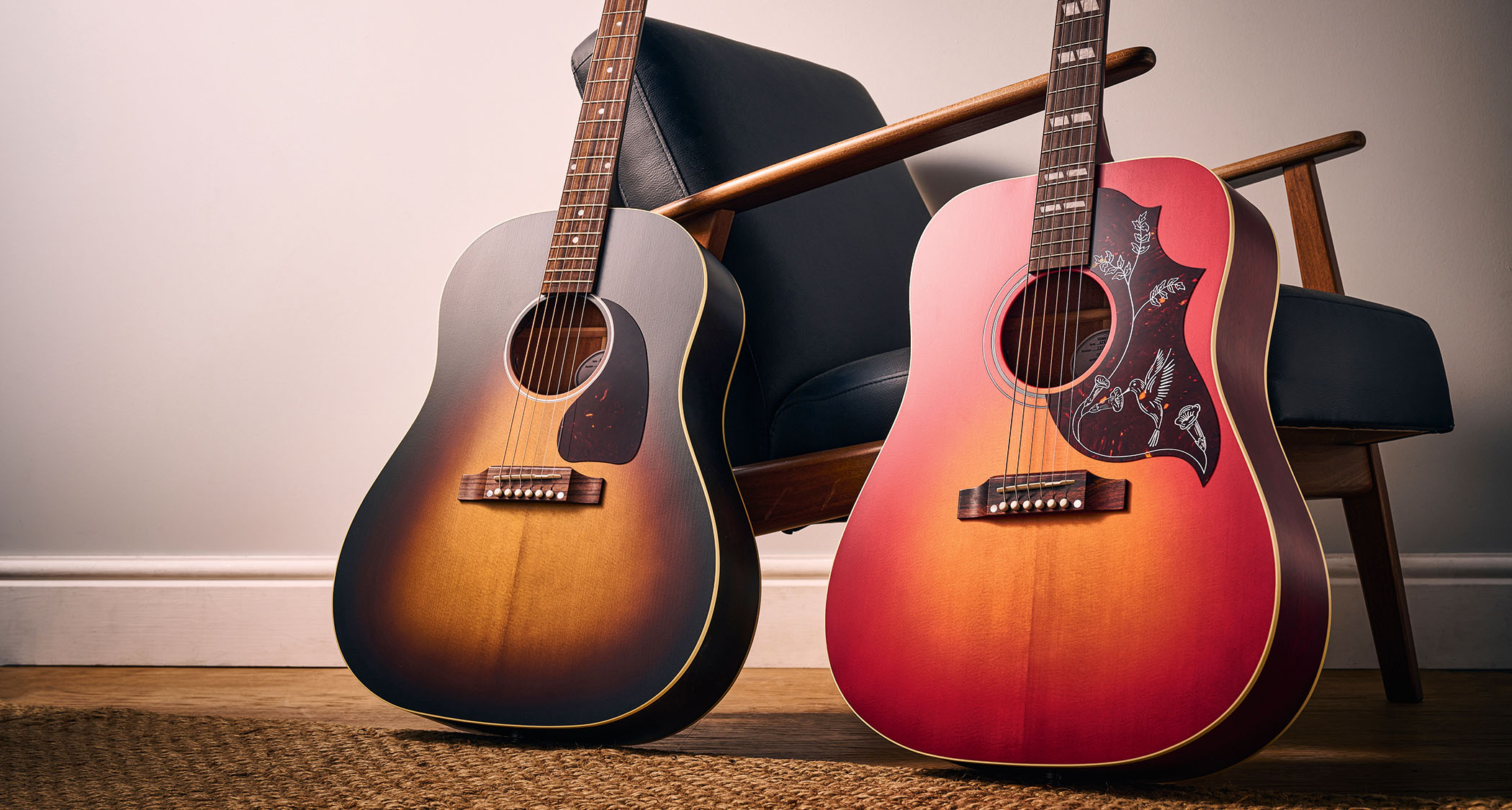Guitar World Verdict
A damn fine working guitar that covers pretty much all of the classic genres with the flick or pull of a switch and the twist of a control knob.
Pros
- +
Detailed build.
- +
Creamy humbucker voices.
- +
Excellent single-coil sounds.
- +
Good weight. Stable in-tune vibrato.
- +
Everything!
Cons
- -
Some parts are generic – but they remain perfectly functional.
You can trust Guitar World
Early in 2022, PRS let slip that its teams were working on an SE version of the long-running David Grissom Tremolo (DGT). He might not have the A-list profile of the likes of John Mayer, but if you’re in the PRS ‘family’, David Grissom is a very important person.
His input into the McCarty Model – appearing in 1994 as the first more vintage-aimed PRS guitar – is well documented and was, of course, the basis for his own signature guitar. Before his name was applied to the headstock, it was going to be called the ‘McCarty II’. That guitar was launched in 2007 at the Austin Summer NAMM Show and was followed by an all-mahogany Standard version in 2012.
A decade on and while little seems to have changed, the DGT has been constantly tweaked in terms of finish, upgraded parts and pickups – like every continuing PRS model – and most recently PRS’s TCI process. Plugging in a 2021 Core-level DGT, it’s quite the old friend and we’re reminded of just why the model has been a cornerstone of PRS over the past 15 years.
In today’s range, the DGT is basically a McCarty (with its slightly thicker body and 22 frets) but with some tweaks. Most obviously, we have the PRS vibrato and an extra control knob, allowing individual pickup volumes and a master tone instead of the McCarty’s master volume and tone.
The neck shape is unique, too, and we also get bigger fretwire, as used by PRS on the Core Santana Retro. The DGT’s covered humbuckers can be coil-split simultaneously by the pull switch on the tone control and are unique to the PRS line.

The build quality and finishing remain a benchmark for our industry, the weight is perfect at 3.35kg (7.37lb), the feel and playability are outstanding, and the sounds, well, if you can’t cover any rootsy classic rock with these humbuckers, not to mention the hugely musical split-coils, you need to get practising.
We’re supposed to be writing about the new SE version and we just can’t stop playing this superb Core electric guitar. It might cost $/£4k, but the DGT is game-changing. So just how much of this exceptional journeyman vibe can PRS retain with its SE DGT model, which clocks in at quarter of the price?

Quite a lot, it turns out. When our early production prototype sample eventually arrives after shipping delays caused by strikes and snow, it’s more than performance-ready.
While we detail the specific differences with the USA-made model later on in this feature, the SE DGT comes in a Gold Top finish with moon inlays or in McCarty Tobacco Burst with birds, and it somehow appears – and, to a certain extent, feels – slightly more contemporary compared with the ‘it could be vintage’ vibe of the USA model. The top carve, now called ‘shallow violin’, is less contoured and there’s none of the dished ‘dimple’ carving under the controls.

Quite often on a humbucker guitar, switching to the single-coil splits ruins the fun, but we’d argue that’s where it starts here
Of course, the hardware, pickups and electronics aren’t of the same level as the USA guitar, but there’s very little lacking in terms of function.
We don’t get locking tuners here (although drop-in locking replacements are available from PRS) and the ‘moulded’ (we’d call it cast) vibrato is deemed good enough to appear on the USA S2 Custom and Standard and the CE 24 models – the semi-hollow version of which currently lists at $2,499/£2,750.
The plastic parts, pickup rings and knobs are more generic than the USA guitar, but, again, these differences have nothing to do with function.
Feel & Sounds
There are minor differences to the neck shape and fretwire, but you may well prefer the less costly date, as we found with the SE version of the USA Silver Sky. There’s certainly nothing wrong here.
The SE neck does feel marginally bigger, but in the hand it retains the pretty round feel of the USA model with that hint of a ‘V’ in the lower positions. The frets are slightly wider and a smidge less high, and one difference is the rosewood binding that hides the fret tangs on the SE, although both pieces are noticeably lighter in colour.

Unlike the USA model that ships with 0.011-gauge strings, the SE ships with 0.010 to 0.046 and four instead of five vibrato springs. We’re tempted to fit some heavier strings, but the SE’s string choice may well have greater appeal. Like the Core model, the SE DGT uses the original PRS scale length of 635mm (25 inches) and this ‘halfway between Fender and Gibson’ duality is so key to this guitar.
Unplugged, this SE sounds lively and vibrant but certainly not over-bright, and when plugged in and in bridge humbucking mode it’s big and beefy; what you hear is pretty single-cut-like, not least with a crisp and cookin’ Marshall-y voice.
There are no sharp edges to be found here – it’s almost slightly cocked wah with highs that are rounded but clear, and mids that kick but don’t sound over-egged or honky. It’s a really creamy voice.
The switch through both-on to neck is beautifully graduated, too, and at the neck you’re hearing the sort of voice you’d associate with a single-cut Les Paul-style guitar. But pull back those volume controls – even slight rises or dips on these volumes seem almost touch-sensitive – and more subtlety emerges with a cleaner and clearer tone, almost Rickenbacker-meets-Gretsch. And there are some pretty cool rhythm sounds here that love a little waggle from the vibrato.
Quite often on a humbucker guitar, switching to the single-coil splits ruins the fun, but we’re tempted to argue that’s where it starts here. Yes, you lose a little output as you’d expect, but it’s far from night and day. The lows and mids sit back and the smother highs of the humbucker mode are replaced with single-coil sparkle and snap.

It’s Fender-y, a little Tele-like at the bridge (especially when played clean), there’s some Strat-y chop at the neck, and with both pickups on things get a little Gretsch-y again. But whatever your ears are telling you, what you hear are very musical, usable single-coil textures that cover considerable ground from funk to indie jangle – particularly with both pickups on and using those dual volumes.
When you run the guitar in single-coil mode and kick in an outboard boost with a little tone control roll-off, you’re in that slightly honky ‘Tele meets older Les Paul’ land. A pretty nice place to be.
One thing, of course, is that the two volumes are reversed from many three-control setups, so the volume knob closest to the bridge pickup is for the bridge, not the neck pickup. But the crescent shape of the control layout means that the controls and pickup switch sit right under your right hand, making subtle adjustments fast and nuanced. There’s nothing stopping you from leaving everything full up, of course, but there’s just so much more to the sound potential if you use them.
Verdict
After reviewing the most recent SE models such as Paul’s Guitar, the Silver Sky and both the Custom and Standard 24-08s, we weren’t expecting anything but a stellar performance from this SE DGT – and that’s what we get.
Is it a facsimile of the USA model at a quarter of the price? No. How can it be? But the SE makes a pretty good stab at emulating the Core version, especially when it comes to the all-important and versatile sounds, and that means we have a very valid musical tool for anyone needing to cover a lot of ground. It’s also a very in-tune and stable guitar, as you’d expect from PRS.
Is it a facsimile of the USA model at a quarter of the price? No. How can it be? But the SE makes a pretty good stab at emulating the Core version
We’re only offered two colours and the Gold Top with those moon inlays is certainly an antidote to the posher flame maple and birds aesthetic of the McCarty Tobacco Burst. It would be nice to see a classic black finish in the future, and how about a Sea Foam Green that’d take us back to where this story all started with David Grissom’s ’85 PRS?
But whatever the history, or its future, this is a damn fine working guitar that covers pretty much all of the classic genres with the flick or pull of a switch and the twist of a control knob.

Specs
- PRICE: $849 / £979 (inc gigbag)
- ORIGIN: Indonesia
- TYPE: Double-cutaway, carved-top solidbody electric
- BODY: Mahogany with ‘shallow violin’ carve maple top (w/ flame maple veneer on sunburst model)
- NECK: Mahogany, DGT profile, glued-in
- SCALE LENGTH: 635mm (25”)
- NUT/WIDTH: Synthetic/42.9mm
- FINGERBOARD: Rosewood, ‘moon’ inlays, 254mm (10”) radius
- FRETS: 22, jumbo
- HARDWARE: PRS Patented vibrato (cast), PRS designed enclosed tuners – nickel-plated
- STRING SPACING, BRIDGE: 52.5mm
- ELECTRICS: PRS DGT ‘S’ Treble and Bass covered humbuckers, 3-way toggle pickup selector switch, individual volume controls and master tone with simultaneous coil‑split pull-switch
- WEIGHT (kg/lb): 3.51/7.72
- OPTIONS: Bird inlays on McCarty Tobacco Sunburst finish
- LEFT-HANDERS: No
- FINISHES: Gold Top (as reviewed), McCarty Tobacco Burst – all high gloss
- CONTACT: PRS Guitars

Dave Burrluck is one of the world’s most experienced guitar journalists, who started writing back in the '80s for International Musician and Recording World, co-founded The Guitar Magazine and has been the Gear Reviews Editor of Guitarist magazine for the past two decades. Along the way, Dave has been the sole author of The PRS Guitar Book and The Player's Guide to Guitar Maintenance as well as contributing to numerous other books on the electric guitar. Dave is an active gigging and recording musician and still finds time to make, repair and mod guitars, not least for Guitarist’s The Mod Squad.
“It holds its own purely as a playable guitar. It’s really cool for the traveling musician – you can bring it on a flight and it fits beneath the seat”: Why Steve Stevens put his name to a foldable guitar
“Finely tuned instruments with effortless playability and one of the best vibratos there is”: PRS Standard 24 Satin and S2 Standard 24 Satin review











